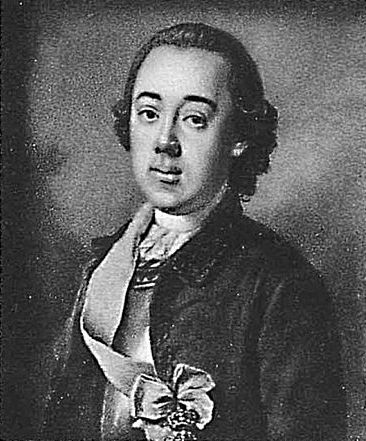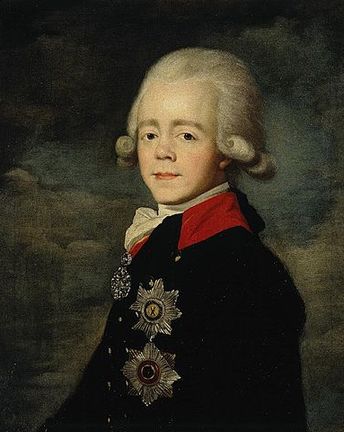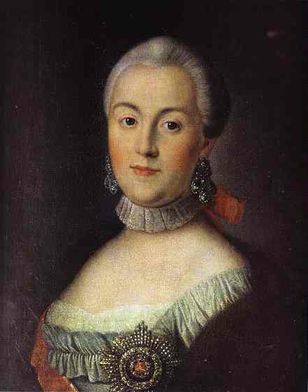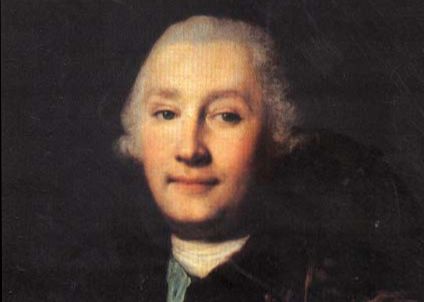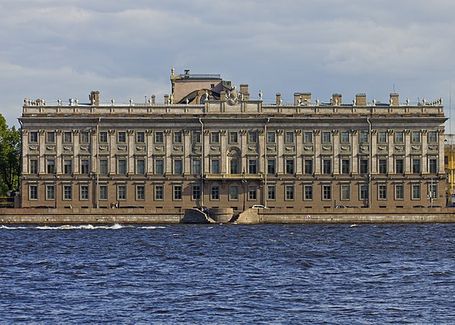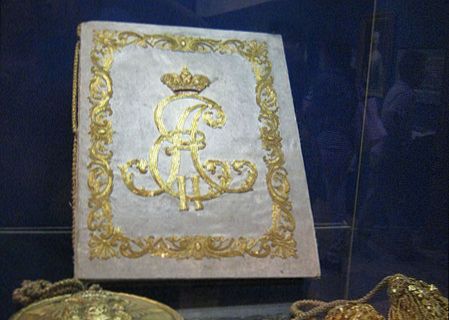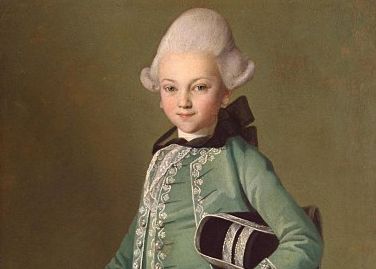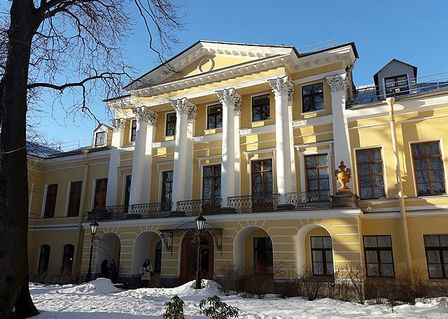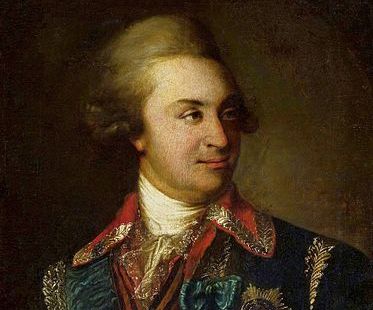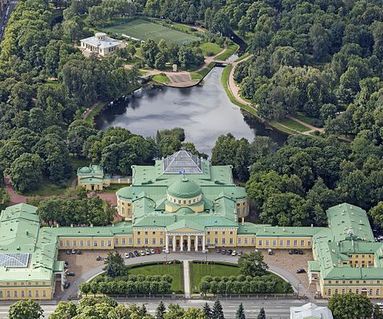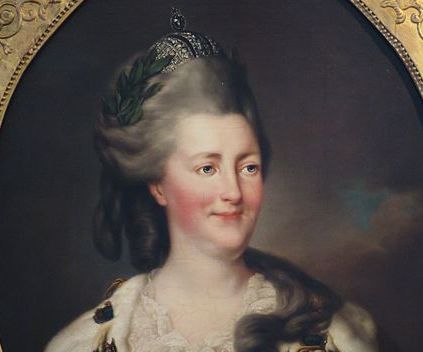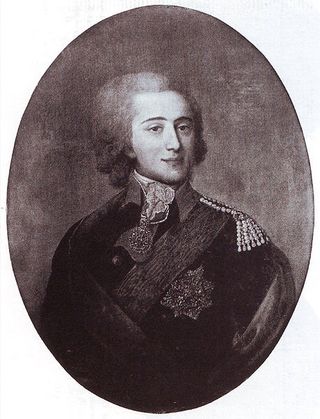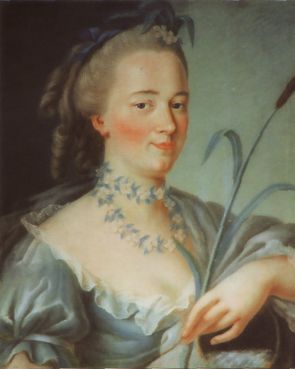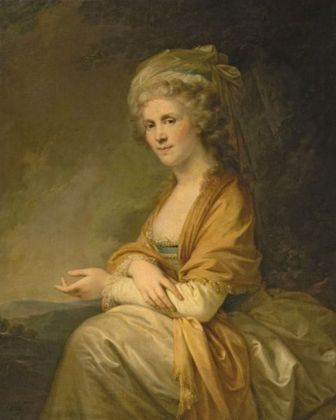Catherine the Great did not like to be alone; she always had a lover by her side. As soon as she ended one relationship, she became entangled in the next. All her lovers, except for one, were younger than she was. She was partial to a man in uniform and preferred men from the minor nobility. The Empress of Russia could be swayed by a pretty face. But the lovers that retained her attention had charm, a sense of humor, and were great conversationalists.
Being her lover was a coveted position since the empress showered her favorite with gifts like palaces, titles, and money. Yet she kept her partners away from government.
Scholars believe she had between 12 and 22 affairs. Twelve of them are widely known. Catherine had three secret-ish lovers while she was married, but later on, she wrote about them in her memoirs. The other 9 shared her bed when she was a widow and an empress. Those were openly recognized as her lovers. A few she fell madly in love with, many she used as playthings.
Catherine the Great was one of the most powerful monarchs in 18th century Europe. She, a German princess, married the heir to the Russian Empire. And then stole his throne.
This powerful woman said of herself: “The trouble is that my heart is loathe to remain even one hour without love.”
These are Catherine the Great’s 12 lovers:
1. Catherine and Sergei Saltykov: her first love
Count Sergei Saltykov (1726-1765) was her lover from 1752 to 1754. At the time, she was married to the Grand Duke Peter HG-Romanov, the heir to the Russian throne.
Sergei was part of the Russian nobility and descended from the posh Rurik family. The count had a high position within the Royal Household: he was the chamberlain, so he had access to Catherine.
Sergei was a consummate player who liked to seduce women. And Grand Duchess Catherine would be the ultimate exquisite prize. She, apparently, was quite innocent back then and fell for his game, believing he loved her.
At first, she was shocked by his advances and fended him off. She pitied him for being in love with -what she thought was- an unattainable married woman. But the player persisted, and she finally succumbed to his charms. He was 26, and she was 23. He is the only one of her lovers who was older than she. Sergei lost interest in her after a few months, obtained a promotion, and left court.
In her memoirs, Catherine hints that Sergei was the father of her son Paul Romanov, the heir to the throne.
Two years later, he came up with another business venture. Along with his younger brother and cousins, Elon sold overpriced Easter chocolates to his neighbors. Their sales pitch? That the buyers were helping young capitalists.
2. Catherine and Stanislaw Poniatowski: a Polish affair
Stanislaw Poniatowski (1732-1798) was her lover from 1756 to 1758, while Catherine was still married.

Although the Polish count was quite young, he had already served in the military and had traveled to the courts of Europe, for his powerful family wanted him to learn about other European countries and form alliances.
.
Sophistication always won Catherine’s heart
.
The count was a cultured man who spoke six languages and was charming and sophisticated.
He arrived in Saint Petersburg in 1755 as the secretary of the British ambassador to Russia. At court, 23-year-old Stanislaw met 26-year-old Catherine. They impressed each other, and by the following year, they were lovers.
Stanislaw deeply admired Catherine. He would later say: “My whole life was devoted to her.” While the Grand Duchess, who had been so callously dismissed by her former lover, liked Stanislaw’s kind nature and romanticism. She, too, fell in love.
Caught almost red-handed
But after a while, Stanislaw fell out of favor with the Empress of Russia, Elizabeth (Peter’s aunt). She believed him involved in an intrigue. So the empress asked the Polish government to recall him.
But Stanislaw and Catherine refused to part ways. He kept postponing his departure. Their imminent separation made them more passionate and reckless. And one night, while sneaking in to see Catherine, the guards caught him. They delivered him to… Catherine’s husband, Peter.
Grand Duke Peter asked Stanislaw if he was his wife’s lover. The Pole denied it. Peter finally freed him when Stanislaw argued that the whole thing was going to become public and mar everyone’s reputation. It did all the same. The following day everyone at court knew of the night’s drama.
Let’s all be friends

The Grand Duke took it in stride. He was delighted to finally catch Catherine at his own level -for he too had had several mistresses.
He held dinners in which he and his lover, Catherine and her lover were in attendance, chatting the night away like great friends. But the court was scandalized -not by the fact that they had lovers, but by the friendly comedy.
Catherine did not like the position she was now in. Her grand love was being degraded, and its public knowledge was hurting her political chances. Plus, Empress Elizabeth was bound to find out soon, and it was not going to be pretty.
Stanislaw and the Grand Duchess realized it was time to say their goodbyes. He returned to Poland, and she was left teary-eyed.
Apparently, Stanislaw was the father of Anna, Catherine’s second daughter, who died in infancy. At least that is what the empress hints at in her memoirs.
The patriots
Once Catherine gained the Russian throne, she supported Stanislaw to become king of Poland. She had expected him to be a puppet king. But once on the throne, patriotic Stanislaw tried to strengthen his country instead. He did not succeed. Catherine, also a patriot, defended Russia’s interests and partitioned Poland thrice with other European powers. By 1795 Poland had ceased to exist.
3. Catherine and Grigory Orlov: a debt
Grigory Orlov (1734-1783). Lovers from 1759/60 until 1772, while she was still married to Peter.
Russian Grigory attended the fancy military school of Saint Petersburg and fought in the Seven Years’ War against Prussia.
Then he was transferred to Saint Petersburg to serve as an officer in the capital’s guard. And that is when the young duchess spotted him, and their long affair began. He was 25, and she was 30.
Deposing a tsar
When Catherine’s husband became tsar in 1762, it was Grigory who helped her depose him with the regiments that were under his command. And it was his brother, Aleksey Orlov, who handled the dirty task of killing the imprisoned Tsar Peter III.
Both brothers were generously compensated once Catherine was on the throne. She gave them titles, money, and many gifts. She also gave Grigory land and built him a gorgeous palace called the Marble Palace.
Their illegitimate child
Grigory and Catherine had an illegitimate son together, Aleksey. The boy was born in 1762, during the few months that Peter III was tsar. Since it was a dangerous time, Catherine hid the pregnancy. And she had the boy whisked away immediately after his birth.
Aleksey was raised in a mansion. And 19 years later his mother, who had never seen him, sent him a letter recognizing him as her own.
Apparently, for a time, Catherine entertained the idea of marrying her lover Grigory, but her counselors advised against it. The pair were together for more than a decade, and Grigory had great power during those years. But then the empress found out that Grigory had been cheating on her with different women. And she moved on to her next lover.
When Grigory died in 1783, Catherine was devastated.
4. Catherine and Alexander Vasilchikov: the rebound

Alexander Vasilchikov (1744-1813). Lovers from 1772 to 1774.
When she found out about Orlov’s infidelities, she turned to this young Russian aristocrat. It seems that for 43-year-old Catherine, he was just a fling.
She spotted Alexander when he was in the Chevalier Guard Regiment and promoted him to Gentleman of the Bedchamber (the post is not as licentious as it sounds, it is a legitimate, official position) in August 1772.
A few days later, she began an affair with the 28-year-old. But since he was working directly for her, she had all the power in the relationship. He had to wait on her and could not leave the palace without her permission.
A bit of respect, if you please
He later said he had felt like a gigolo -and that he had been treated like one. That if he requested anything from Catherine, she would not answer. But the next day, he would find money in his pocket. And that they had never discussed anything that was “close to his heart.”
In the two years that the affair lasted, the empress dotted on Alexander. She gave him properties and gifts with her usual generosity. But the relationship ended when Catherine saw someone better on the horizon. She dismissed Alexander and gave him a pension of 20,000 rubles.
5. Catherine and Grigory Potemkin: the love of her life
Grigory Potemkin (1739-1791). Lovers from 1774 to 1776.
Potemkin was the love of Catherine’s life and her long-time companion. She wrote to one of her friends: “Why do you reproach me because I dismiss a well-meaning but extremely boring bourgeois (Vasilchikov) in favor of one of the greatest, the most comical and amusing, characters of this iron century (Potemkin)?”
Grigory Potemkin was charming and sociable, and he made Catherine laugh. But the Russian was much more than a handsome face. Potemkin was a man of substance. He had a brilliant mind. He was an eloquent conversationalist -always a pro with Catherine- and a great general and statesman. Of all her men, Potemkin was the one that was her equal. And she recognized it. She called him “my twin soul.”
Were they married?
When they began their affair, she was 45, and he was 35. He already had a distinguished military career behind him.
Some believe their physical relationship lasted for only two years. Others think they were secretly married (a morganatic marriage) and had an open relationship for 17 years.
What is certain is that, sex or no sex in those later years, they remained close friends until Potemkin’s death. They wrote to each other sharing their most intimate secrets and adored one another.
The most powerful man in the empire
Potemkin became the most important man in the Russian Empire. He and Catherine co-ruled. They consulted each other on political matters. And Catherine delegated responsibility to the capable Potemkin. He planned and carried out several wars successfully and always acted in Catherine’s best interest. He was in charge of the land armies and fleets.
Catherine made him governor of the provinces he had conquered in the south. He spent most of his time there.
It is believed that Potemkin introduced her to new men to keep her company while he was away. But more than once, he became jealous when he thought one of them was getting too close to her.
Catherine made most of her lovers counts, but only Potemkin, she made prince (of Tauris, in Crimea, Russia). And while she was at it, she also obtained for him the title of Prince of the Holy Roman Empire, from her ally Emperor Joseph II.
Her rock dies
In 1791, Potemkin visited Catherine in Saint Petersburg. And he tried to steer her away from her newest love interest: Platon Zubov. After failing, he returned to his southern provinces. He fell ill on the way and realized he was probably going to die.
In those last weeks, Catherine and Potemkin corresponded every day. When he received her letters, he wept and re-read them several times. When she was told he had died, she was devastated and cried for weeks. She said she had lost the only person she could rely on.
6. Catherine and Pyotr Zavadovsky: jealousy all around
Pyotr Zavadovsky (1739-1812). Lovers from 1776 until 1777.

Pyotr became Catherine’s secretary in 1775. And in January of the following year, they became lovers. Observers thought deep and cultivated Pyotr was genuinely in love with her. But at the onset of the relationship, she was still with Potemkin -who was the same age as Pyotr. And the situation proved too much for all involved.
Potemkin was jealous, Pyotr was jealous. And Catherine was never one for drama. So Pyotr left the following year.
Catherine, as parting gifts, gave him 5,000 rubles, lands in Chenihiv (Ukraine) and Mohilev (Belarus), 4,000 peasants, and 50,000 rubies. Later on, she named him Privy Councilor and Director of the State Bank.
He must have been a capable man since Catherine was not the only one to promote him. Years later, her grandson Tsar Alexander I made him Minister of Education.
7. Catherine and Semyon Zorich: a flawed hero
Semyon Zorich (1743-1799). Lovers from 1777 to 1778.

This Serbian noble was highly decorated before meeting Catherine. He had fought for Russia and distinguished himself in several wars. During one of them, he was captured by the Ottomans and made a galley slave; he spent 5 years in captivity. When the Russo-Turkish War ended in 1774, he was released.
Back in Russia, Semyon’s shiny resume caught Potemkin’s attention, and he made Semyon his aide-de campe, aka his secretary, in military jargon.
.
A flawed hero
.
At the time, Catherine was involved with Pyotr Zavadovsky, who Potemkin was jealous of. So the prince decided to introduce handsome young Semyon to Catherine. The stratagem worked, and the 48-year-old empress began a relationship with the 34-year-old war hero.
But just ten months into the affair, Semyon became too self-important. Catherine had made him a count, but he wanted to be a prince like Potemkin. Plus, although he was a good soldier, he was not the brightest man. And Catherine started noticing the flaws.
Semyon thought Catherine’s disinterest was the work of Potemkin, so he challenged him. Potemkin ignored him.
Catherine’s unfailing generosity
A few months later, Catherine dismissed her hot-headed war hero. But she rewarded him generously. Semyon received a state near the Winter Palace (Catherine’s residence in Saint Petersburg), 300 rubles, and a state in Shklov with an 8,000 ruble income.
Semyon made great improvements to his state in Shklov. He created military schools for children of the nobility, educated the town’s girls, built a theater for concerts, ballet, and plays; and renovated his mansion where he gave luxurious dinners.
After the end of their affair, in 1780, the Empress met Austrian Emperor Franz Joseph in a town near Shklov, so Semyon invited them to his house. He attended them so lavishly that Catherine returned to Shklov a second time.
- Don’t miss: These 7 unlucky European aristocrats ended up as slaves in Africa, Asia, and North America
8. Catherine and Ivan Rimsky-Korsakov: every woman’s husband
Ivan Rimsky-Korsakov (1754 to 1831). Lovers from 1778 to 1779.
Gorgeous and musical
Ivan was, like many of Catherine’s lovers, a military noble. He was Russian, although he belonged to the Smolensk nobility, so nowadays, he would be called Belorussian.
The young soldier had made his way up the ranks and was by now a Major General. And he had a talent for music too: he played the violin and was a tenor singer. The 24-year-old is said to have had classic good looks.
When he met 49-year-old Catherine, the pair hit it off and began an affair. She wrote of him: “(he) whom every painter should paint, every sculptor should sculpt and every poet should sing… He makes no gesture, no movement, that is not graceful.”
Too popular
But, turns out, Catherine was not the only one taken with the singing nobleman, for he had affairs with other ladies of the court while he shared the empress’ bed. Catherine eventually found him cheating on her with Countess Prakovja Bruce. The countess was her main lady-in-waiting and her closest confidant. They had been friends for over 30 years, since Catherine arrived in Russia.
Prascovja and Ivan were both exiled from court. The empress told Ivan that if he left the city, she would be generous with him. Meanwhile, she sent married Pracovja back to her husband.
As soon as Ivan left the court, another countess, Catherine Stroganova, left both court and husband to go after him. Singing Ivan had also been having an affair with her. Now that was too much. Spurned Catherine thought of arresting Ivan and Stroganova, but then reasoned an empress should not stoop to the level of her subjects.
Ivan and Straganova lived together in Moscow for the next 30 years, happily, it would seem.
- Don’t miss: Was Julius Caesar Handsome?
9. Catherine and Alexander Lanskoi: the soul of an angel
Alexander Lanskoi (1758-1784). Lovers from 1780 to 1784.

Catherine’s heartbreak over Ivan’s betrayal did not last long. Six months later, she found a new source of joy: 22-year-old Alexander Lanskoi. Potemkin introduced the impoverished nobleman, who was his aide-de-campe, to Catherine. The unlikely duo began a relationship that turned out to be a happy one. While her relationships after Potemkin had been short-lived, this one lasted four years.
.
A happy relationship
.
Alexander was quite in love with the 51-year-old empress, and they had shared interests. He, too, liked architecture, theater, literature, and art.
He seems to have been a kind soul. Catherine’s description of him, unlike that of her previous lover, dwelt on his inner qualities: “kind, gay, honest, and full of gentleness.”
He did not involve himself in politics, nor was he after power. He did not request gifts or accept bribes -from people wanting to access the empress-, and he even got along with Potemkin. One of Catherine’s ministers said of him: “compared to the others, he was an angel.” He had a good sense of humor, and Catherine adored his company.
Potemkin to the rescue
But to Catherine’s dismay, Alexander died of diphtheria in 1784, when he was 26.
She was plunged into grief and spent three weeks cloistered in her room without seeing anyone. She had believed, she wrote, that she would be with Alexander for the rest of her life.
Potemkin had to leave his post in the south and come to the capital to help her overcome the sorrow.
- You may also like: Bet You Didn’t Know These 9 Royals Are South Americans
10. Catherine and Alexander Yermolov: overplaying one’s hand
Alexander Yermolov (1754-1834). Lovers from 1785 to 1786.
One year after Lanskoi’s death, Catherine found solace in another Russian Alexander. This one was older. He was 31 when they began their affair -she was 56.
But after a year in Catherine’s favor, Alexander thought he was strong enough to take down Potemkin. He was wrong. He overplayed his hand and was dismissed. Once again, Potemkin won. Catherine gave Alexander 130,000 rubles, and he exiled himself in Paris and then Austria.
11. Catherine and Alexander Mamonov: boredom
Alexander Dmitriev-Mamonov (1758-1803). Lovers from 1786 to 1789.

The 28-year-old descended from the posh Rurikid family, like Catherine’s first lover, the player Saltykov. This Russian noble was a protege of Potemkin and his aide-de-campe. Apparently, it was Potemkin who introduced the pair in 1786.
.
She is charmed
.
The 57-year-old empress was instantly charmed by this new Alexander. She loved his manners, his mastery of French -a language that was close to Catherine’s heart-, his sense of humor, intelligence, and good looks.
They began a relationship, and she showered him with gifts, from promotions to palaces. She made him a count and even bought one of Potemkin’s estates, Dubrovitsy, for him.
He is bored
But two years into the relationship, Alexander had lost interest. He told a friend that he was bored. He had fallen in love with 25-year-old Princess Darya Schevatova, who was 3 years his junior.
He confesses to Catherine: the princess is pregnant, and he wants to marry her. Catherine hides her hurt pride and chooses magnanimity. She allows them to marry within the palace and, as a wedding present, gives them 100,000 rubles and an estate with 2,250 serfs. But she does exile them from Saint Petersburg.
Alexander and his wife settled in Moscow. But six years later, he is bored again, now of Darya, and starts missing his previous good luck. So he writes to the empress saying that their breakup “constantly tortures his soul.”
Catherine never answered him -being Catherine, she had already moved on to the next relationship.
12. Catherine and Platon Zubov: the vain one
Platon Zubov (1767-1822). Lovers from 1789 until Catherine’s death in 1796.

Twenty-two-year-old Platon caught Catherine at a vulnerable time. She was in her sixties and longed for a stable partnership.
And one year after she began her affair with vain, ambitious, air-headed Platon, her beloved Potemkin died. The blow was devastating. The empress said she had lost the only person she could rely on.
.
Ambition and incompetence
.
With Potemkin gone, Catherine became dependent on Platon. She gave him Potemkin’s southern provinces to govern. But Platon was no Potemkin. Not even close. The court and ministers were dismayed at his incompetence and absurd ideas. While Potemkin promoted possible wars, waged them, and won them, Platon proposed preposterous wars without any understanding of politics or diplomacy. One day he wanted to take Vienna, the next, Paris.
Until then, Catherine had been careful to keep her lovers from meddling in political life. Only the two capable ones (Potemkin and Zavadovsky) had been given a say in government. But now Platon had a say in everything.
He wanted riches, titles, and estates for himself and his family. He got them. The whole court had to defer to him. He even mistreated Catherine’s son, Prince Paul.
When Catherine died, Platon -rightly- panicked and hid in his sister’s house. Paul, now emperor, took back all of Platon’s titles and estates.
Five years later, Platon was part of the conspiracy that murdered Emperor Paul.
More Articles
